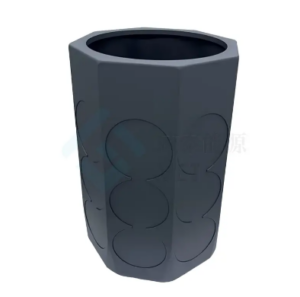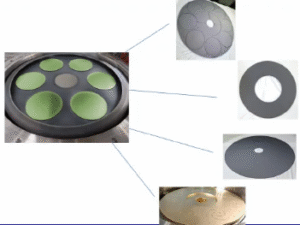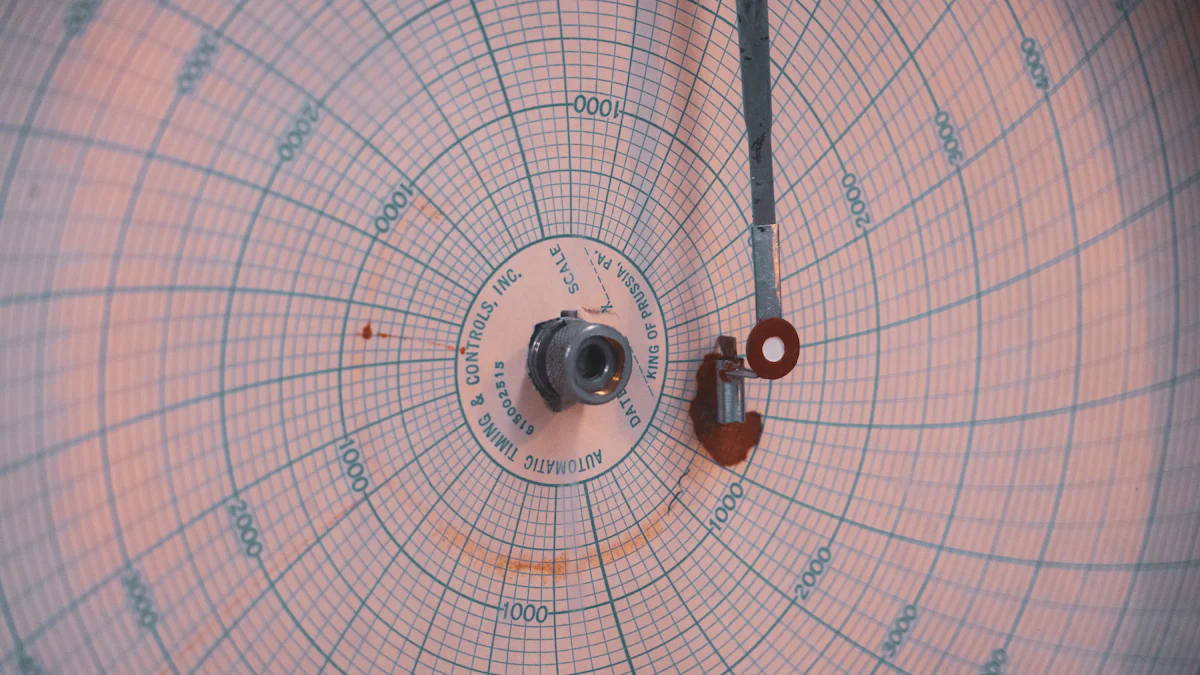
ピロカーボンコーティングは、原子力燃料技術の重要な役割を果たしています。 核燃料粒子の性能と安全性を高める保護層を提供します。 高い熱安定性および化学薬品の不活性のようなその独特な特性は、それを極度な環境で必要とします。 これらのコーティングは、激しい放射線に耐えるだけでなく、有害物質の放出を防ぐだけでなく、。 興味深いことに、同じ材料は、その耐久性と生体適合性が実証された貴重なバイオメディカル分野におけるアプリケーションを発見しました。 このデュアルユーティリティは、先進技術におけるピロカーボンの汎用性と重要性を強調しています.
要点
- Pyrocarbonのコーティングは放射の損傷に対して保護層を提供し、有害なろ過プロダクトの解放を防ぐことによって核燃料の安全そして性能を高めます.
- ピロカーボンのユニークなターボストラティック構造は、機械的強度と柔軟性のバランスを提供し、原子力および生物医学的用途の両方で極端な環境に最適です.
- プラズマ強化化学蒸着などのコーティング技術の最近の進歩は、両方の業界に利益をもたらす、ピロカーボンコーティングの精度と効率を改善します.
- Pyrocarbonの化学不活性および生物適合性はそれを医療機器の貴重な材料にし、摩耗を減らし、忍耐強い安全を改善します.
- ピロカーボンコーティングの長寿と耐久性は維持および取り替えの必要性を最小限にすることによって原子力操作の費用節約につながります.
- 原子力および生物医学の適用は安全および有効性を保障するためにpyrocarbonのコーティングの精密に、製造業の品質管理の重要性を強調します.
- 先導的な研究は、先進的な核原子炉および医療技術の革新的なアプリケーションのための方法を残す、ピロカーボンコーティングの特性を高めることを目指しています.
Pyrocarbonの理解 コーティング
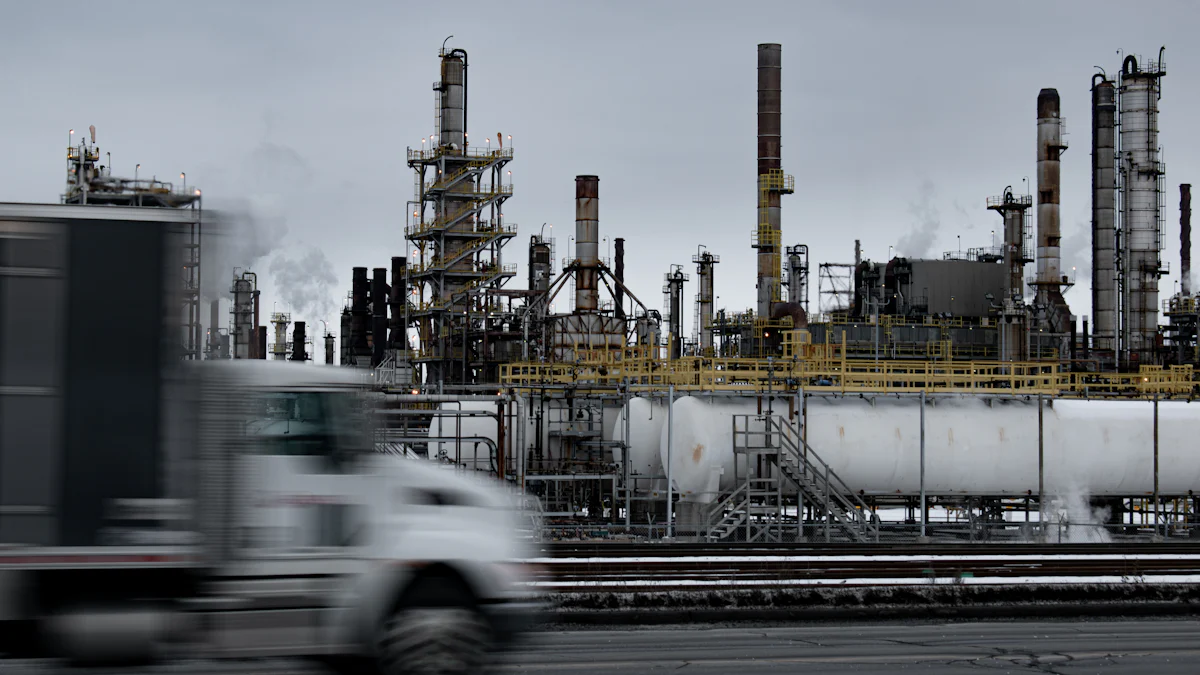
Pyrocarbonの定義 コーティング
ピロカーボンの組成と構造
ピロカーボンは、ユニークなターボストラティック構造で配置されたカーボン原子で構成されています。 非常に注文結晶の配置を持っているグラファイトとは異なり、ピロカーボンは、より無秩序でレイヤーされた構成を展示しています。 この構造は、剛性と柔軟性のバランスをとり、要求の厳しい用途に適しています。 材料は炭酸ガスが高温でカーボン層を沈殿物に分解する化学蒸気の沈殿物プロセスを、形作ります。 この方法により、緻密で均一なコーティングが実現し、極端な環境でのパフォーマンスが重要となります.
ピロカーボンが他の炭素系材料とどのように異なるか
Pyrocarbonは、その異なる特性のために、他の炭素ベースの材料とは別に立っています。 グラファイトは優秀な熱伝導性を提供しますが、pyrocarbonは圧力の下で割れる優秀な機械強さおよび抵抗を提供します。 ダイヤモンドとは異なり、非常に硬くて脆い、ピロカーボンは、耐久性と弾力性を兼ね備えています。 これらの特性は靭性および適応性を要求する適用のためにそれを理想的にします。 また、他の多くの炭素材料のそれを超える化学的不活性は、腐食性または高放射線環境で確実に実行できるようにします.
ピロカーボンコーティングの主な特性
高温抵抗および熱安定性
Pyrocarbonのコーティングは高温環境で包んでいます。 構造の完全性を維持し、極端な熱の下で劣化を抵抗します。 この特性は、燃料粒子が激しい熱条件に直面している核原子炉で不可欠であることを証明します。 そのような温度に耐える材料の能力は、原子力操作の安全性と効率を保証します.
機械的強度と耐久性
ピロカーボンコーティングの機械的強度は、故障せずに重要なストレスに耐えることができます。 過酷な条件にさらされても、割れや剥離を防止します。 この堅牢性は、原子炉の動作中に損傷のリスクを最小限に抑えるため、原子力燃料粒子を保護するために不可欠です。 これらのコーティングの長持ちする性質はまた維持の条件を減らします.
化学的不活性および生体適合性
Pyrocarbonのコーティングはほとんどの物質との驚くべき化学不活性、抵抗の反作用を表わします。 この特性は、原子力原子炉に見られるような、化学的に積極的な環境の安定性を保証します。 また、生体適合性はバイオ医薬品用途の扉を開けました。 医療機器では、材料は、生物学的組織と安全に相互作用し、業界全体の汎用性を実証します.
核燃料用途におけるPyrocarbonコーティング
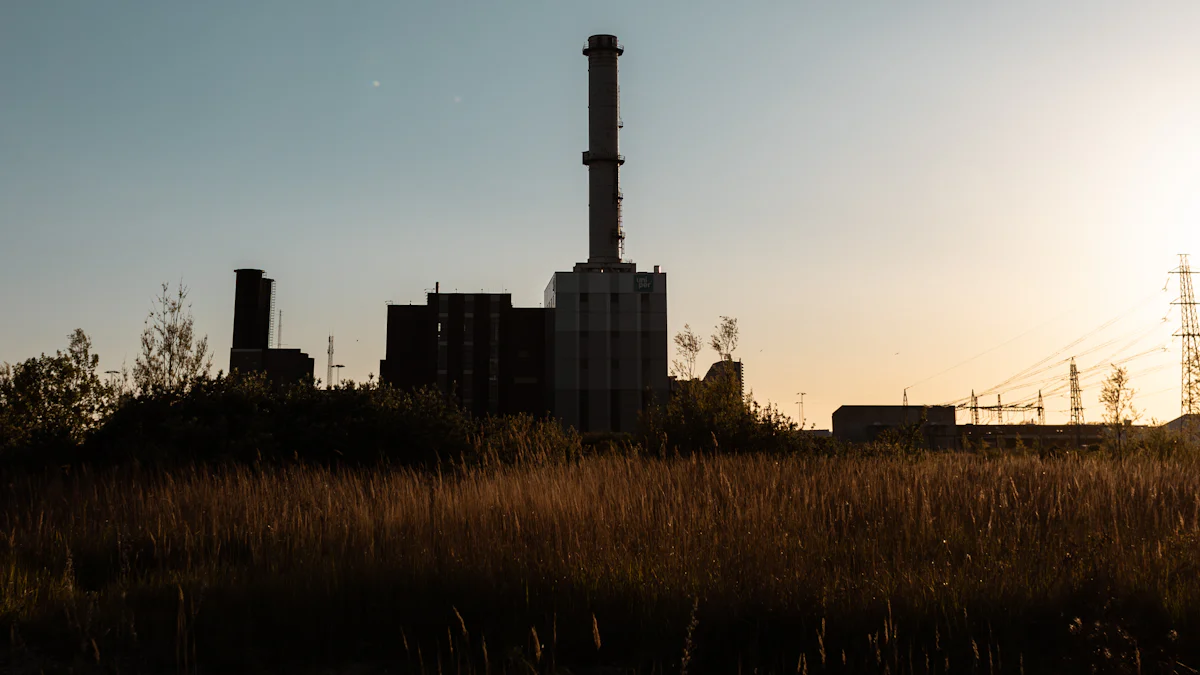
原子力燃料性能の向上
放射線損傷による核燃料粒子の保護
Pyrocarbonのコーティングは原子力燃料粒子のための重要な障壁として役立ちます。 強烈な放射線から燃料カーネルをシールドし、構造の整合性を時間をかけて劣化させることができます。 この保護層は材料の失敗の危険を減らす放射エネルギーを吸収し、分散します。 燃料粒子の安定性を維持することにより、原子炉の動作中に一貫した性能を保証します。 この機能により、ピロカーボンコーティングは、先進的な核技術において重要なコンポーネントとなります.
投薬製品発売の防止
核燃料内での燃焼反応は、放出されると重要な安全リスクをポーズできる副産物を生み出します。 Pyrocarbonのコーティングはこれらのfissionプロダクトが原子炉の環境にescapingから防ぎます。 その密で浸透性のある構造は、封入層として機能し、燃料粒子内の有害隔離をトラッピングします。 汚染リスクを軽減し、核原子炉の全体的な安全性を高めます。 このコーティングの信頼性は、原子力燃料の安全な取り扱いと運用に貢献します.
原子力燃料におけるPyrocarbonコーティングの利点
核原子炉の安全性と信頼性の向上
ピロカーボンコーティングの適用は直接核原子炉の安全を改善します。 極端な条件に耐える能力は、燃料粒子が高温および放射線曝露下でも、そのまま残っていることを保証します。 燃料劣化による事故の発生を最小限に抑えます。 また、長時間にわたる一貫した燃料性能を維持することで、耐衝撃性を高めています。 これらの資質は、現代の核原子炉の設計の礎石を作ります.
長寿と費用対効果
ピロカーボンコーティングは、原子力燃料粒子の寿命を延ばします。 その耐久性は摩耗を減らし、引き裂き、燃料がより長い持続期間のために効果的に機能することを可能にします。 この長寿は、原子力施設の交換費や運用コストを削減し、少ない代替品に翻訳します。 また、耐薬品性や物理的損傷に対する耐摩耗性を最小限に抑えます。 これらの経済上の利点は、マイクロカーボンコーティングを核燃料効率を高めるための費用対効果の高いソリューションにします.
課題と限界
複雑さとコストの追求
Pyrocarbonのコーティングを作り出すことは精密な制御を要求する厳密なプロセスを含みます。 化学蒸気蒸着方法は高温および専門装置を要求します、生産費を増加させます。 コーティングの均一性を実現し、製造の複雑さにもなります。 これらの課題は、生産プロセスのリソース集中的、いくつかのアプリケーションで普及への障壁を提示します.
コーティングの均一性の潜在的な問題
ピロカーボンコーティングの均一性は、その有効性のために重要です。 厚さや密度の変化は、その保護特性を妥協することができます。 強固なコーティングは、弱点につながる可能性があります。, 放射線損傷の危険性を高めるか、製品漏れ. 均一な適用の達成は高度の技術および厳密な品質管理の対策を要求します。 これらの課題は、研究者やメーカーにとって重要な焦点です.
ピロカーボンコーティングの最近の進歩
コーティング技術の革新
近年、ピロカーボンコーティングを塗布するために使用される方法の重要な進歩が見られました。 研究者はより精密および効率を達成するために精製された化学蒸気の沈殿物(CVD)プロセスを持っています。 高度な制御システムは、温度、ガスの流れ、および沈殿率を驚くべき精度で監視できるようになりました。 これらの改善は材料の保護特性を維持するために重要な一貫したコーティングの厚さおよび密度を保障します.
プラズマ強化CVDなどの革新的なアプローチも登場しました。 この技術は、プラズマを使用して反応プロセスを強化し、より迅速な堆積と材料の品質を向上させます。 プラズマ強化法は、エネルギー消費量と生産時間を削減し、製造プロセスをより持続可能なものにします。 また、従来のCVDを原子層堆積などの他の方法と組み合わせることで、コーティング性能をさらに高めるハイブリッド技術も研究しています.
オートメーションは、高度なコーティング技術で重要な役割を果たしています。 自動化されたシステムは人間の間違いを減らし、生産のスケーラビリティを高めます。 これらのシステムは、メーカーがより大きな規模で高品質のピロカーボンコーティングを生産し、原子力およびバイオメディカル産業の成長した需要を満たすことを可能にします。 コーティングプロセスへのロボティクスの統合も均一性を高め、生産コストを削減しました.
TRISO燃料粒子の材料特性の改善に関する研究
TRISO(tri-structural isotropic)の燃料粒子は、原子力燃料技術の進歩を表し、ピロカーボンコーティングは設計に不可欠です。 研究者は、先進的な原子炉の要求要件を満たすために、これらのコーティングの材料特性を強化するために積極的に取り組んでいます。 ピロカーボンの熱伝導性を高めることに重点を置いています。 改善された熱伝導性は熱をより効果的に管理し、極端な条件下でTRISOの燃料粒子の安定性そして効率を保障します.
別の主要な研究の方向はpyrocarbonのコーティングの機械強さを高めることを含んでいます。 科学者たちは、材料のターボストラティック構造を最適化し、亀裂や変形に抵抗する方法を調べています。 これらの進歩は、TRISO燃料粒子の寿命を延ばし、交換頻度を減らし、リアクターの信頼性を向上させることを目指しています.
ピロカーボンコーティングの耐薬品性を向上させるための取り組みも勢いをあげています。 高められた化学抵抗はコーティングが高い放射か腐食性の物質が付いているそれらのような積極的な環境で安定した残ることを保障します。 研究者は、材料のプロパティを変更するために、他の要素の少量が導入されるドーピング技術で実験しています。 より堅牢で汎用性の高いコーティングを作成することを目的としています.
学術機関と業界のリーダーとのコラボレーションにより、この分野における進捗を加速しました。 共同研究の取り組みは、実験室試験の約束を示す実験コーティングの開発につながっています。 これらの進歩は、次世代のTRISO燃料粒子を商用原子炉に配備し、より安全で効率的な原子力エネルギーのための方法を舗装します.
生物医学の適用のPyrocarbonのコーティング
医療機器およびインプラントへの応用
人工的な中心弁および接合箇所の取り替えの使用
Pyrocarbonのコーティングは人工的な中心弁および接合箇所の取り替えの設計に革命化しました。 エンジニアは、これらの医療機器の耐久性と機能性を高めるために、この材料を使用します。 人工的な中心弁では、pyrocarbonは摩擦および摩耗を減らすことによって滑らかな血の流れを保障します。 血栓形成のリスクを最小限に抑え、患者の安全性に不可欠です。 ヒップや膝のインプラントなどの関節交換、材料の優れた耐摩耗性の利点。 このプロパティは、インプラントの寿命を延ばし、頻繁な交換の必要性を減らし、患者の生活の質を改善します.
摩耗を減らし、生体適合性を改善する役割
ピロカーボンコーティングのユニークな特性は、医療機器の摩耗を大幅に削減します。 材料の滑らかな表面は移動部品間の摩擦を最小にし、分解を時間の上の防ぎます。 この機能は、一定の動きが材料の故障につながることができるジョイント交換で特に重要です。 ピロカーボンは、優れた生体適合性を発揮し、人体組織と安全にやり取りすることができます。 その化学的不活性は、有害反応を防ぎ、インプラントの好ましい選択をします。 これらの資質はpyrocarbonと塗られる医療機器が人体内で確実にそして安全に実行することを保障します.
原子力および生物医学の適用間の類似性
耐久性・耐薬品性の重要性
原子力および生物医学の適用はpyrocarbonのコーティングの耐久性そして化学不活性に重く頼ります。 原子力原子炉では、材料は劣化することなく極端な放射線と熱条件に耐える。 同様に、生物医学装置では、それは人体内の摩耗そして化学反応に抵抗します。 耐久性に裏付けられたこの共有された信頼性は、両方の分野での長期的性能を保証します。 化学的不活性は、原子炉の過酷な環境や生物学的システム内であっても、安定性を維持する上で重要な役割を果たします.
コーティングの塗布の精密の必要性
Pyrocarbonのコーティングを適用する精密は両方の企業で成功のために必要です。 原子力燃料では、均一なコーティングは、安全を損なう可能性がある弱点を防ぎます。 生物医学装置では、精密な適用は人間のティッシュとの両立性を保障し、装置の失敗の危険を減らします。 化学蒸気蒸着などの高度な技術は、メーカーが必要な精度を達成することができます。 これにより、核および生物医学的用途における品質管理の重要性が強調されます.
アプリケーション要件の重要な違い
動作環境と性能の期待
原子力および生物医学の適用のための動作環境は著しく異なります。 核原子炉は、過熱、放射線、腐食性物質にピロカーボンコーティングを曝します。 これらの条件は例外的な熱安定性および機械強さを要求します。 対照的に、生物医学装置は生物適合性および生物的摩耗への抵抗が重要な人体内で作動します。 性能の期待も変化します。 核コーティングは、患者の健康とデバイスの長寿を優先しながら、原子炉の安全性と効率性を確保しなければなりません.
規制・安全への配慮
規制および安全要件は、2つのフィールド間で別の重要な違いを示します。 原子力用途は、環境汚染を防止し、原子炉の安全性を確保するために厳しい規則を遵守しなければなりません。 これらの基準は、極端な条件下で材料の性能に焦点を当てています。 生物医学の適用は医学の安全標準を満たすために厳密なテストに直面します。 規制機関は、人体の健康に対する生体適合性、毒性、長期的効果を評価します。 これらの異なる要件は、各業界におけるピロカーボンコーティングの開発と応用を形作ります.
アプリケーションの比較と対照化
ピロカーボンコーティングの過剰な利点
熱および化学安定性の共有信頼性
Pyrocarbonのコーティングは例外的な熱および化学安定性を、原子力および生物医学の適用両方利点示します。 核原子炉では、これらのコーティングは劣化することなく極端な熱と放射線に耐える。 この安定性は、燃料粒子の安全性と効率を長期にわたって確保します。 同様に、生物医学装置では、pyrocarbonは人体内の化学反応に抵抗します。 その不活性な性質は、長期的な互換性を確保し、生物学的組織との有害相互作用を防ぎます.
両方のフィールドは、要求条件下で性能を維持するために、この安定性に依存しています。 摩耗および腐食に抵抗するpyrocarbonの能力は耐久性を要求する適用のためのそれを信頼できる選択にします。 素材の多様性を強調し、高度な技術の重要性を強調しています.
双方の分野に利益をもたらす横断的な進歩
Pyrocarbonの研究の進歩は頻繁に原子力および生物医学の企業両方に寄与します。 プラズマ強化化学蒸着などのコーティング技術の革新、コーティングの精度と品質を向上させます。 これらの開発は、原子力燃料粒子と医療インプラントの性能を同様に高めます。 研究者らは、相互の学際的なコラボレーションを促進し、他の分野からのインスピレーションを頻繁に描きます.
たとえば、TRISO燃料粒子のピロカーボンの機械的強度を改善する研究は、より耐久性のあるバイオメディカルインプラントの設計に通知しました。 同様に、医療分野における生体適合性研究は、原子力用途におけるより安全なコーティングの開発に影響を及ぼしています。 この知識の交換は、多様な業界にピロカーボンの可能性を加速し、拡大します.
チャレンジとイノベーションの多様化
製造およびアプリケーションにおけるフィールド固有の課題
各分野は、ピロカーボンコーティングの製造および適用におけるユニークな課題に直面しています。 原子力技術では、燃料粒子の均一なコーティングが重要な問題に残ります。 厚さや密度の変化は、材料の保護特性を妥協することができます。 メーカーは、これらの懸念に対処するために高度な技術と厳格な品質管理を採用する必要があります.
生体医学分野では、生体適合性が重要な課題を保ちます。 コーティングは人体内の副作用を避けるために厳密な医学の標準を満たしなければなりません。 製造工程は、摩擦や摩耗を抑える滑らかな表面を作成するために精密が必要です。 これらの分野固有の課題は、ピロカーボンコーティングの開発を形作り、アプリケーションに影響を与える.
核・生物医学分野におけるユニークな研究の方向性
原子力および生物医学の適用の調査の努力は、多くの場合、異なる優先事項のために掘り下げます。 原子力産業では、科学者は熱伝導性および放射抵抗を高めることに焦点を合わせます。 TRISO 燃料粒子の性能を最適化し、リアクターの安全性を確保することを目的としています。 研究者はまた、生産コストを削減する方法を探求し、高度なコーティングをよりアクセス可能にします.
対照的に、生物医学の研究は生物適合性および耐久性を優先します。 サイエンティストは、ピロカーボンと生物学的組織間の相互作用を改善する方法を検討しています。 医学のインプラントの寿命を延ばす努力は表面の工学および物質的な構成の革新を運転します。 これらの明確な研究の方向は、ピロカーボンコーティングの適応性を示す間、各分野の特定のニーズを反映します.
Pyrocarbonのコーティングは原子力燃料および生物医学の適用で重要な役割を担います。 耐久性や化学的安定性などの独自の特性で、これらの分野に不可欠です。 各業界はコーティング技術の進歩から恩恵を受けていますが、それぞれが異なる課題に直面しています。 将来の研究では、さまざまな分野にわたって新しいアプリケーションをアンロックし、効率性を高め、安全性を向上させることができます。 Pyrocarbonの汎用性は、複雑な問題を解決する材料科学の重要性を強調しています。 テクノロジーとヘルスケアの未来を形にする画期的なイノベーションを探求する.

